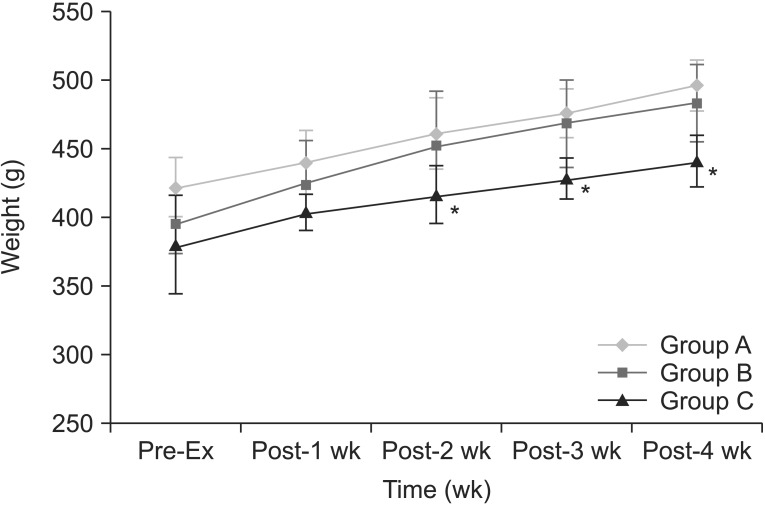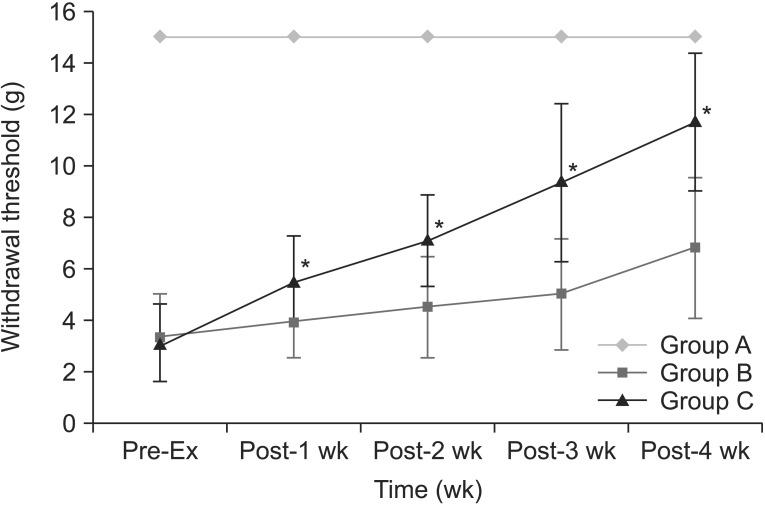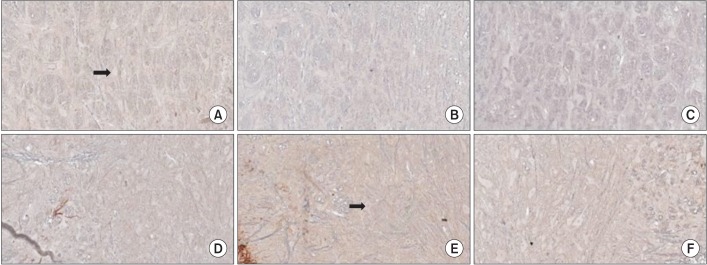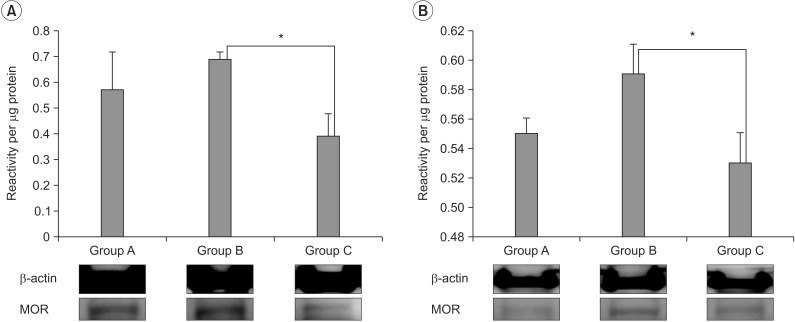1. Merskey H, Bogduk N. Classification of chronic pain: descriptions of chronic pain syndromes and definitions of pain terms. 2nd ed. Seattle: International Association for the Study of Pain;2012.
2. Woolf CJ, Mannion RJ. Neuropathic pain: aetiology, symptoms, mechanisms, and management. Lancet. 1999; 353:1959–1964. PMID:
10371588.

3. Bennett GJ, Kajander KC, Sahara Y, Iadarola MJ, Sugimoto T. Neurochemical and anatomical changes in the dorsal horn of rats with an experimental painful peripheral neuropathy. In : Cervero F, Bennett GJ, Headley PM, editors. Processing of sensory information in the superficial dorsal horn of the spinal cord. New York: Plenum Press;1989. p. 463–471.
4. Dworkin RH. An overview of neuropathic pain: syndromes, symptoms, signs, and several mechanisms. Clin J Pain. 2002; 18:343–349. PMID:
12441827.

5. Dworkin RH, O'Connor AB, Backonja M, Farrar JT, Finnerup NB, Jensen TS, et al. Pharmacologic management of neuropathic pain: evidence-based recommendations. Pain. 2007; 132:237–251. PMID:
17920770.

6. Rosch PJ. Exercise and stress reduction. Compr Ther. 1985; 11:10–15. PMID:
4006411.
7. Wildmann J, Kruger A, Schmole M, Niemann J, Matthaei H. Increase of circulating beta-endorphin-like immunoreactivity correlates with the change in feeling of pleasantness after running. Life Sci. 1986; 38:997–1003. PMID:
2936942.

8. Janal MN, Colt EW, Clark WC, Glusman M. Pain sensitivity, mood and plasma endocrine levels in man following long-distance running: effects of naloxone. Pain. 1984; 19:13–25. PMID:
6330643.

9. Galdino GS, Duarte ID, Perez AC. Participation of endogenous opioids in the antinociception induced by resistance exercise in rats. Braz J Med Biol Res. 2010; 43:906–909. PMID:
20802976.

10. Koltyn KF. Analgesia following exercise: a review. Sports Med. 2000; 29:85–98. PMID:
10701712.
11. Schmitt TK, Mousa SA, Brack A, Schmidt DK, Rittner HL, Welte M, et al. Modulation of peripheral endogenous opioid analgesia by central afferent blockade. Anesthesiology. 2003; 98:195–202. PMID:
12502997.

12. Stagg NJ, Mata HP, Ibrahim MM, Henriksen EJ, Porreca F, Vanderah TW, et al. Regular exercise reverses sensory hypersensitivity in a rat neuropathic pain model: role of endogenous opioids. Anesthesiology. 2011; 114:940–948. PMID:
21386701.
13. Werme M, Thoren P, Olson L, Brene S. Running and cocaine both upregulate dynorphin mRNA in medial caudate putamen. Eur J Neurosci. 2000; 12:2967–2974. PMID:
10971637.

14. Leong ML, Gu M, Speltz-Paiz R, Stahura EI, Mottey N, Steer CJ, et al. Neuronal loss in the rostral ventromedial medulla in a rat model of neuropathic pain. J Neurosci. 2011; 31:17028–17039. PMID:
22114272.

15. Porreca F, Burgess SE, Gardell LR, Vanderah TW, Malan TP Jr, Ossipov MH, et al. Inhibition of neuropathic pain by selective ablation of brainstem medullary cells expressing the mu-opioid receptor. J Neurosci. 2001; 21:5281–5288. PMID:
11438603.
16. Mase H, Sakai A, Sakamoto A, Suzuki H. A subset of µ-opioid receptor-expressing cells in the rostral ventromedial medulla contribute to thermal hyperalgesia in experimental neuropathic pain. Neurosci Res. 2011; 70:35–43. PMID:
21238509.

17. De Oliveira MS, da Silva Fernandes MJ, Scorza FA, Persike DS, Scorza CA, da Ponte JB, et al. Acute and chronic exercise modulates the expression of MOR opioid receptors in the hippocampal formation of rats. Brain Res Bull. 2010; 83:278–283. PMID:
20655988.

18. Sforzo GA, Seeger TF, Pert CB, Pert A, Dotson CO. In vivo opioid receptor occupation in the rat brain following exercise. Med Sci Sports Exerc. 1986; 18:380–384. PMID:
3018423.

19. Bennett GJ, Xie YK. A peripheral mononeuropathy in rat that produces disorders of pain sensation like those seen in man. Pain. 1988; 33:87–107. PMID:
2837713.

20. Kim YP, Kim HB, Jang MH, Lim BV, Kim YJ, Kim H, et al. Magnitude- and time-dependence of the effect of treadmill exercise on cell proliferation in the dentate gyrus of rats. Int J Sports Med. 2003; 24:114–117. PMID:
12669257.

21. Chaplan SR, Bach FW, Pogrel JW, Chung JM, Yaksh TL. Quantitative assessment of tactile allodynia in the rat paw. J Neurosci Methods. 1994; 53:55–63. PMID:
7990513.

22. Hargreaves K, Dubner R, Brown F, Flores C, Joris J. A new and sensitive method for measuring thermal nociception in cutaneous hyperalgesia. Pain. 1988; 32:77–88. PMID:
3340425.

23. Paxinos G, Watson C. The rat brain in stereotaxic coordinates. 7th ed. Burlington: Elsevier Science;2013.
24. Costigan M, Scholz J, Woolf CJ. Neuropathic pain: a maladaptive response of the nervous system to damage. Annu Rev Neurosci. 2009; 32:1–32. PMID:
19400724.

25. Hutchinson KJ, Gomez-Pinilla F, Crowe MJ, Ying Z, Basso DM. Three exercise paradigms differentially improve sensory recovery after spinal cord contusion in rats. Brain. 2004; 127(Pt 6):1403–1414. PMID:
15069022.

26. Kuphal KE, Fibuch EE, Taylor BK. Extended swimming exercise reduces inflammatory and peripheral neuropathic pain in rodents. J Pain. 2007; 8:989–997. PMID:
17890162.

27. Cobianchi S, Marinelli S, Florenzano F, Pavone F, Luvisetto S. Short- but not long-lasting treadmill running reduces allodynia and improves functional recovery after peripheral nerve injury. Neuroscience. 2010; 168:273–287. PMID:
20347016.

28. Bement MK, Sluka KA. Low-intensity exercise reverses chronic muscle pain in the rat in a naloxone-dependent manner. Arch Phys Med Rehabil. 2005; 86:1736–1740. PMID:
16181935.

29. Hoffmann P, Terenius L, Thoren P. Cerebrospinal fluid immunoreactive beta-endorphin concentration is increased by voluntary exercise in the spontaneously hypertensive rat. Regul Pept. 1990; 28:233–239. PMID:
2140453.
30. Morgan WP. Affective beneficence of vigorous physical activity. Med Sci Sports Exerc. 1985; 17:94–100. PMID:
3157040.

31. Rossier J, French ED, Rivier C, Ling N, Guillemin R, Bloom FE. Foot-shock induced stress increases beta-endorphin levels in blood but not brain. Nature. 1977; 270:618–620. PMID:
201864.
32. Chung JS, Chong SY, Myoung JS, Choi HJ. Effect of physical exercise on plasma beta-endorphin level and pain threshold. J Korean Acad Rehabil Med. 1993; 17:368–373.
33. Al-Hasani R, Bruchas MR. Molecular mechanisms of opioid receptor-dependent signaling and behavior. Anesthesiology. 2011; 115:1363–1381. PMID:
22020140.

34. Koneru A, Satyanarayana S, Rizwan S. Endogenous opioids: their physiological role and receptors. Global J Pharmacol. 2009; 3:149–153.
35. McNicol E, Horowicz-Mehler N, Fisk RA, Bennett K, Gialeli-Goudas M, Chew PW, et al. Management of opioid side effects in cancer-related and chronic noncancer pain: a systematic review. J Pain. 2003; 4:231–256. PMID:
14622694.

36. Millan MJ. Descending control of pain. Prog Neurobiol. 2002; 66:355–474. PMID:
12034378.

37. Ren K, Dubner R. Descending modulation in persistent pain: an update. Pain. 2002; 100:1–6. PMID:
12435453.

38. Fields HL, Basbaum AI, Heinricher MM. Central nervous system mechanisms of pain modulation. In : McMahon SB, Koltzenburg M, editors. Wall and Melzack's textbook of pain. 5th ed. Philadelphia: Elsevier/Churchill Livingstone;2006. p. 125–142.
39. Jaggi AS, Singh N. Role of different brain areas in peripheral nerve injury-induced neuropathic pain. Brain Res. 2011; 1381:187–201. PMID:
21238432.

40. Marinelli S, Vaughan CW, Schnell SA, Wessendorf MW, Christie MJ. Rostral ventromedial medulla neurons that project to the spinal cord express multiple opioid receptor phenotypes. J Neurosci. 2002; 22:10847–10855. PMID:
12486178.

41. Smith MA, Yancey DL. Sensitivity to the effects of opioids in rats with free access to exercise wheels: muopioid tolerance and physical dependence. Psychopharmacology (Berl). 2003; 168:426–434. PMID:
12709780.
42. Bian D, Nichols ML, Ossipov MH, Lai J, Porreca F. Characterization of the antiallodynic efficacy of morphine in a model of neuropathic pain in rats. Neuroreport. 1995; 6:1981–1984. PMID:
8580422.

43. Takada T, Yamashita A, Date A, Yanase M, Suhara Y, Hamada A, et al. Changes in the circadian rhythm of mRNA expression for µ-opioid receptors in the periaqueductal gray under a neuropathic pain-like state. Synapse. 2013; 67:216–223. PMID:
23280810.






 PDF
PDF ePub
ePub Citation
Citation Print
Print






 XML Download
XML Download